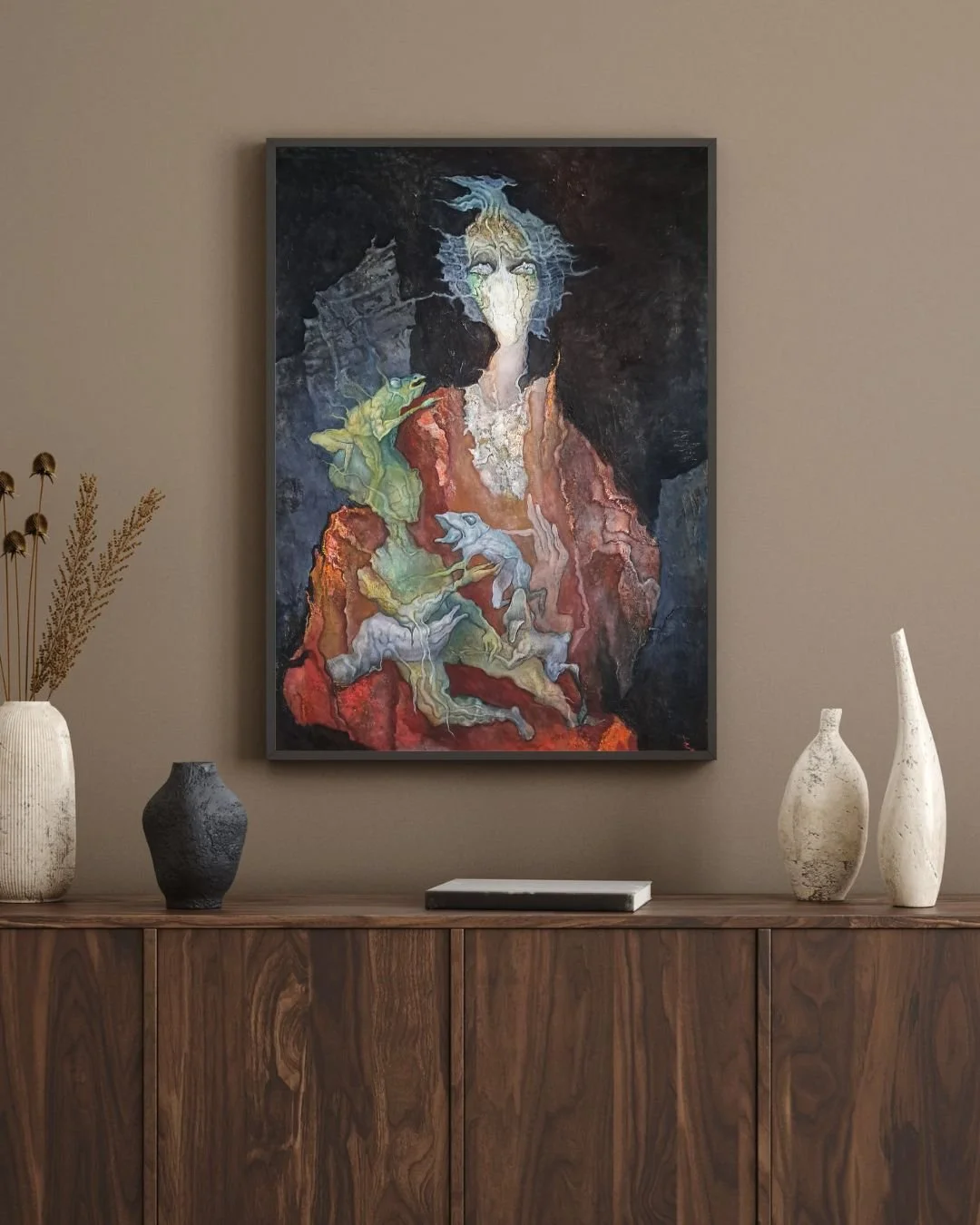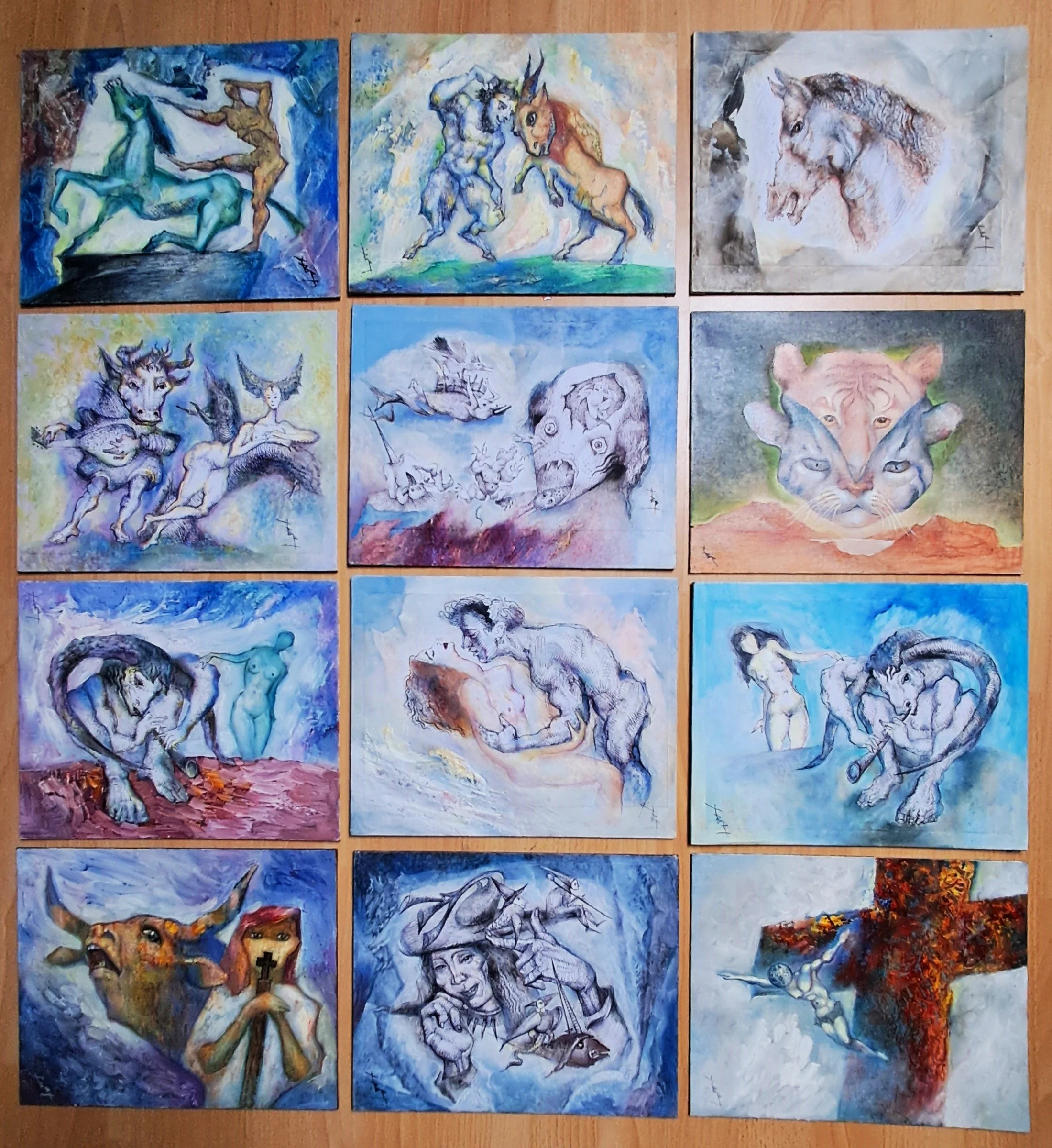Oil on Canvas, 70 x 50 cm, 2010
This work reimagines the classical image of Mary and Jesus within a contemporary context. It asks: how might artificial intelligence depict sacred figures? How would it reshape our visions of people, spirituality, and religion? The piece becomes less about repeating tradition and more about questioning how technology reframes what was once untouchable.
A.I. Maria & Her Child
Oil on Canvas, 70 x 60 cm, 2016
The painting is inspired by “Gabrielle d’Estrées and Her Sister,” a work whose authorship remains unknown to this day. My version is intentionally designed to appear as though it were generated by artificial intelligence — enigmatic, precise, and detached. Only one sister is present here, evoking a sense of absence and reinterpretation. Perhaps, in the future, this version too will become detached from its creator, blurring the lines between human and machine authorship.
Gabrielle d’Estrées Without Her Sister
Oil on canvas, 50 × 40 cm, 1995
From the very beginning of my artistic journey, I felt a deep pull toward surrealism—its power to merge reality with imagination and to explore the subconscious through symbolism. My early work from the 1980s and 1990s, shaped by classical Russian training in St. Petersburg, reflects this blend. Influenced by artists like Dalí, I created dreamlike scenes anchored in technical precision and structure. These works can often be recognized by my earlier signature, marking a period where tradition and surrealism converged.
Roots & Reverie
Oil on Canvas, 100 x 80 cm, 2010
This work revisits the familiar image of Mary, Joseph, and the child, reimagined through the language of color. Stripped of rigid formality, the figures emerge in hues that convey emotion rather than doctrine—faith, care, and intimacy translated into pure chromatic expression. The sacred becomes both recognizable and renewed, inviting the viewer to experience an ancient story through a lens that is at once everyday and unfamiliar.
Reimagined
Oil on canvas, 48 × 48 cm, 1993
The question is: how many stories can you see? How many figures appear, and into what do they transform? This work invites the viewer to explore its layers, to discover narratives that shift and multiply with each gaze. I didn’t give this piece a specific title, because it could have many. The color palette places it among my earlier works, created while I was still living in my hometown. During that period, I often worked with these tones, and they remain deeply tied to that time in my life.
Multae Narrationes
Ink on Paper, 70 x 50 cm, 1993
A figure caught mid-transformation—half human, half something other. Naked, raw, and exposed, the body hovers in the uncertain space between what is known and what is still becoming. This drawing is not about the final form, but about the process itself: the surrender to change, the vulnerability of transition, the trust required when the outcome remains unseen. Transformation carries within it this paradox—you are inside it without knowing where it leads.
Transformation
Acrylic on paper, 50 x 70 cm, 2019
This longhorn is emblematic of my work: grounded in reality, yet drifting into the surreal, where solid forms dissolve into fluid lines. I'm drawn to that fluidity—to how color can pull you under and reshape your sense of the world. I often start with a clear image, but the painting leads me somewhere unexpected. That’s the magic of creativity: an invitation to surrender control and explore the unknown.
Longhorn
Acrylic on Board, 14 x 18 cm (each), 2024
Each board unfolds a story of its own, yet none of them are fixed. They wait for the viewer to enter, to align them with imagination, memory, and personal myth. Together, they form a collection of shifting narratives—inhabited by mythical creatures, symbolic situations, and archetypal elements. These boards are not definitive statements but open invitations, allowing the owner to weave their own storyline through them.







